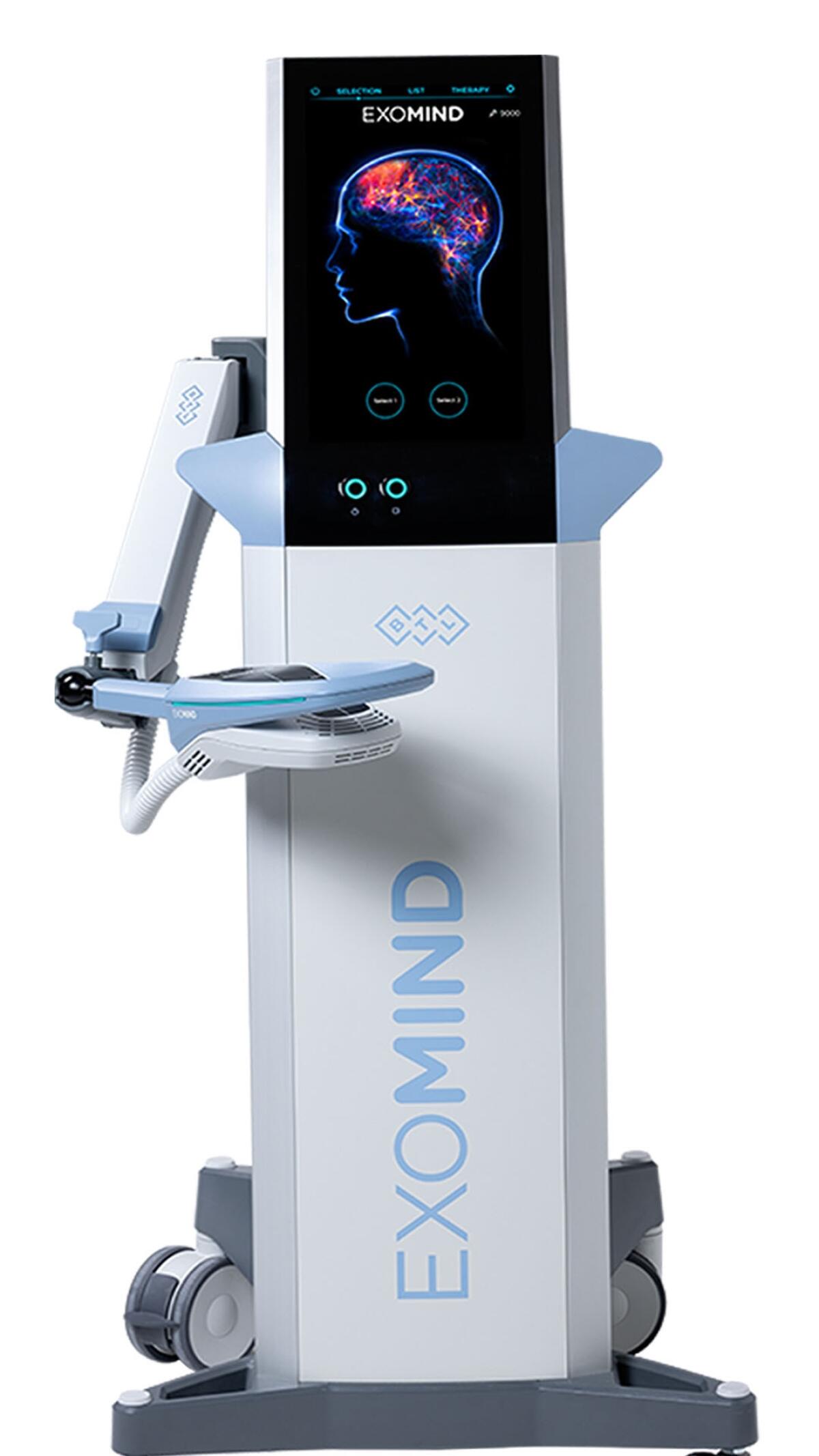Can a 30-Minute Brain Boost Fix the Way We Feel? Inside the Rise of Exomind
- Share via

America is emotionally running on fumes. The latest data from the World Happiness Report, according to a recent press release, puts the U.S. at an all-time low in global rankings. At the same time, findings from the Ipsos Global Health Service Monitor reveal that mental wellness has now eclipsed cancer as the top health concern in North America. Not heart disease. Not diabetes. But stress, burnout, and emotional fatigue are what have people most worried.
We’re collectively tapped out, and it shows.
But if the past few years have taught us anything, it’s that mental health isn’t a side quest; it’s central to everything else. And now, a new frontier in non-invasive brain science might be stepping in where therapy and meds leave off. It’s called Exomind. And while it sounds like the name of an AI villain in a Marvel movie, it might just become your brain’s new best friend.
From Research Labs to the Doctor’s Office: The TMS Revolution
Transcranial Magnetic Stimulation, or TMS, was invented in 1985 and cleared by the FDA in 2008 for treatment-resistant depression. Often used when standard treatments fall short, TMS has shown notable effectiveness with minimal side effects.
Enter Exomind, a next-generation version of this proven technology that brings the power of neuroscience out of the ivory tower and into your neighborhood doctor’s office. Using its proprietary ExoTMS™ platform, Exomind promises to rewire how we approach brain health by democratizing access to TMS, making it sleeker, faster, more comfortable, and astonishingly accessible.
Who It’s For: From Menopause Brain Fog to GLP-1 Cravings
The idea of a non-invasive, drug-free brain boost sounds futuristic. But Dr. Georgine Nanos, MD, MPH, a family medicine physician and early adopter of Exomind, says that most responsive patient groups include:
- Perimenopausal women battling mood swings, brain fog, and irritability
- Postpartum mothers struggling with bonding, depression, or anxiety
- Burned-out executives suffering from insomnia, anxiety, or focus issues
- Patients transitioning off GLP-1 weight loss drugs who need help managing food cravings and emotional eating
“We had a patient who hadn’t been able to connect with her newborn. After just a few sessions, she told me it was like the light switched on again,” says Dr. Nanos. “That’s not placebo. That’s neuroscience doing its job.”
How ExoTMS™ Actually Works
“We’re enhancing neuroplasticity,” Dr. Nanonos explains. “We’re helping the brain learn, adapt, and recover faster.” Think of it as clearing out the mental traffic jam so you can reach emotional clarity more efficiently.”
So, how does it work?
ExoTMS™ uses a focused magnetic field to stimulate specific areas of the brain involved in emotional regulation, cognitive function, and self-control. By targeting the prefrontal cortex and other mood-related zones, the device helps build new neural pathways, effectively retraining the brain to process emotions and thoughts more constructively.
Each session delivers repetitive magnetic pulses to underactive brain regions, aiming to restore balance in the neural circuits that govern mood and cognition. Sessions are typically well-tolerated, with a low risk of side effects, and can be done without anesthesia or sedation, allowing patients to resume normal activities immediately.
Clinical studies show promising outcomes: 50% of patients experience a reduction in depressive symptoms within four weeks, while 58% achieve sustained remission at 12 months. For treatment-resistant cases, 65% show significant improvement. In layman’s terms: it helps your brain stop spiraling, catastrophizing, or shutting down.
Instead, it strengthens the circuitry responsible for calm, clarity, and decision-making.
Unlike older TMS systems that could feel pinchy or intense, Exomind’s version is said to be sensationless. Patients recline in a chair and let the machine do its work for 30 minutes. Most complete a series of six sessions over one to three weeks. There’s no anesthesia, no recovery time, and no drama. Just a quiet reboot.
The Rise of the Wellness Brain Hack
The timing couldn’t be better. We’re living in an age where self-optimization has gone mainstream. Biohacking and cryotherapy are no longer fringe tools but trending hashtags. Yet what sets Exomind apart is its clinical backbone. This isn’t a gadget or wellness gimmick; it’s FDA-cleared medical technology. And by embedding itself into primary care and OB/GYN offices (where 80% of mental wellness care happens), Exomind is positioning itself not as an alternative, but as an evolution.
“Think of it like a Peloton for your prefrontal cortex,” jokes one Los Angeles patient who completed a treatment series in February, according to an Exomind press statement. “I didn’t want meds. I just wanted to stop feeling like I was constantly on edge. After the second session, I started sleeping through the night.”
The Brain Is Having Its Moment
It may have taken a global mental health reckoning to get us here, but the message is clear: your brain deserves as much maintenance as your body. With technologies making once-elite treatments approachable, mental wellness might finally be getting the upgrade it deserves.
Click here to learn more about Exomind












